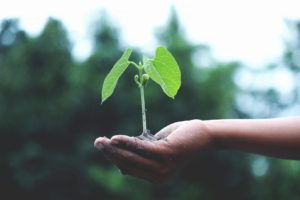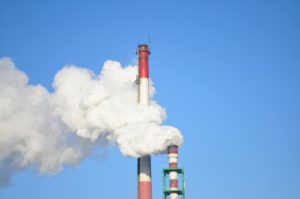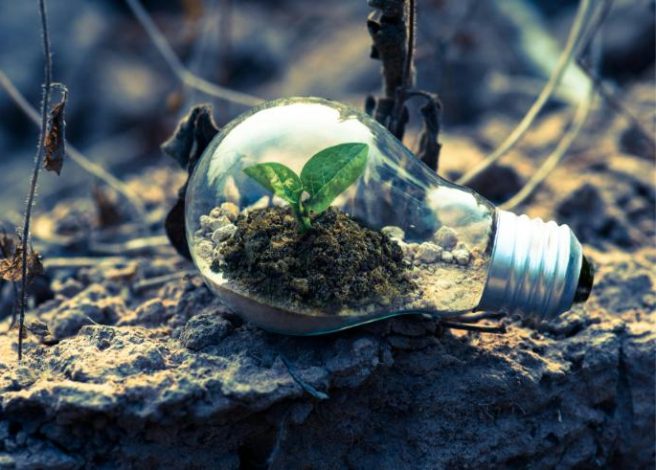Has “sustainability” changed from a marketing buzzword to a key business need? Amid the flood of “green” claims and environmental initiatives, many professionals struggle with understanding sustainability in practical, actionable terms. If only we had a real-life Captain Planet to show us the way.
What exactly makes a practice sustainable? How do we measure environmental impact? How do packaging choices influence your sustainability profile? These questions are crucial for food businesses.
This week, we sat down with Conor Carlin, President of Clefs Advisory LLC. Operating at the nexus of packaging and sustainability, Conor served as President of the Society of Plastics Engineers (2024) and is a former General Manager for ILLIG in North America. His expertise spans materials, packaging technologies, policy, commercial strategy, and market intelligence.
This article will help food industry professionals cut through the noise. It will equip you with the basic knowledge to make choices that aid your business and the environment.
Why Sustainability Matters for Food Businesses
For food industry professionals, understanding sustainability is becoming a business necessity. Consumers are more environmentally conscious, regulations are tightening, and resource constraints are real. By understanding sustainability fundamentals, food businesses can: 
- Make more informed packaging and process decisions
- Anticipate regulatory changes
- Respond to consumer preferences
- Reduce costs through resource efficiency
- Build resilience against supply chain disruptions related to resource scarcity
But what exactly does sustainability look like? It’s time to take a deeper dive.
What Is Sustainability?
At its core, sustainability means using resources in a way that allows them to be replenished. The term is often overused in business, but its core meaning is still vital. A truly sustainable practice is one that could, in theory, last forever by ensuring intelligent conservation of resources.
In the environmental world, sustainability means saving the resources we use to make products and services. In the food industry, it means finding ways to make, package, and ship food that doesn’t harm the planet and saves money. It’s about finding that sweet spot where going green doesn’t mean seeing red on your balance sheet.
Key Elements of Assessing and Understanding Sustainability
When examining sustainability, several critical factors must be considered:
Energy Use
Energy generation is a major focus of sustainability efforts. Fossil fuel extraction and use follow a straight line. We take these resources and burn them, but we don’t replace them. Renewable resources, such as wind and solar power, are sustainable because their sources naturally replenish.
Water Management
 Water usage is a crucial metric in sustainability because of its fundamental importance to life and food production. Sustainable water practices ensure that freshwater resources remain available and uncontaminated. Water management is critical to the food industry. It affects everything, from farming to processing and manufacturing.
Water usage is a crucial metric in sustainability because of its fundamental importance to life and food production. Sustainable water practices ensure that freshwater resources remain available and uncontaminated. Water management is critical to the food industry. It affects everything, from farming to processing and manufacturing.
Land Use
Sustainable practices allow farmland and natural ecosystems sufficient time to replenish. This might mean changing crops, using smart farming techniques, or carefully gathering food from nature.
Measuring Environmental Impact: Carbon Footprint and LCA
Carbon Footprint Explained
A carbon footprint describes the total amount of greenhouse gases (GHGs) an economic activity generates. The primary GHGs are carbon dioxide, methane, and nitrous oxide, though not all have equal impact. Carbon dioxide is the base for measuring all other GHGs. For easy comparison, everything is converted to “CO₂ equivalent” (CO₂e).
Life Cycle Assessment (LCA)
Life Cycle Assessment (LCA) is a method developed in the 1990s to evaluate the environmental impact of products and materials. It tracks all energy and materials used throughout a product’s entire life, from creation to disposal. This helps companies identify ways to reduce waste, energy use, and environmental impact. This is key in understanding sustainability.
LCA adoption has been slow because it’s complex and time-consuming, even for simple products. Organizations need compelling reasons to invest in conducting an LCA. Companies might perform LCAs for several reasons: to reduce damage to ecosystems and climate, to address depletion of resources like fossil fuels and water, or to improve efficiency, reduce costs, and enhance public image.
Today, more companies are using LCAs to meet sustainability reporting requirements and regulations. Consumer demand for environmentally responsible products has increased, and more data is now available for analysis (energy grids, transportation networks, land use). Specialist consulting firms like Quantis, ERG, or Sphera will access databases maintained by Ecoinvent, GaBior, and the Federal LCA Commons. Typical packaging LCAs can cost $30,000-$45,000 and take 3-6 months to complete depending on scope and complexity.
Packaging Materials: Comparative Sustainability
 For food industry professionals, packaging choices represent a significant sustainability decision point. Different materials have varying environmental impacts:
For food industry professionals, packaging choices represent a significant sustainability decision point. Different materials have varying environmental impacts:
Plastics
Different polymer types have different carbon footprints. The largest part of plastics’ environmental footprint happens in the production stage for traditional fossil plastics like PET, PP, PS, and PE (we’ll stick to the acronyms). This phase relies heavily on oil and gas extraction, which consumes a lot of energy and contributes the bulk of emissions. The main impact of bio-based plastics such as PLA and PHA comes from farming. This includes land use, fertilizers, and water consumption.
Weight is a critical factor when comparing plastics to alternative packaging materials. Plastics are lightweight and easy to make, which often leads to a smaller carbon footprint than heavier options when comparing per unit, and fewer carbon emissions during transport.
Other Materials
Studies, such as the Trucost 2016 Dataset, show that switching from plastic packaging to alternatives like glass, aluminum, or paper can lead to a much higher environmental impact. In fact, it could mean up to four times more CO₂ equivalent emissions. This is primarily due to the weight difference and resources required in production.
Sustainability Challenges and Opportunities
Upstream Considerations
 As long as materials are derived from fossil fuels, they will remain subject to sustainability scrutiny. The food industry has the chance to use bio-based alternatives. These options can work well and reduce environmental harm.
As long as materials are derived from fossil fuels, they will remain subject to sustainability scrutiny. The food industry has the chance to use bio-based alternatives. These options can work well and reduce environmental harm.
This, however, isn’t as easy as you would think. Here are some challenges and possible ways of overcoming them:
More research and development is needed: Investing in R&D helps solve technical problems by creating better plant-based materials. Advances in biotechnology can lead to products that work better and last longer.
Bioplastics are expensive: When more people want plant-based alternatives, companies can make larger quantities, which lowers production costs. Encouraging more people to use these materials helps make them more affordable.
Supply chains need to be optimized: Building reliable networks for plant-based materials is essential. This means finding multiple sources for raw materials, improving farming methods, and creating strong relationships with suppliers.
Regulation issues: Making rules more consistent across different countries simplifies compliance and cuts costs. Industry members can work with government agencies to create more uniform and supportive regulations.
Consumers need to be educated: Teaching people about the benefits and safety of plant-based alternatives increases acceptance. Clear marketing and honest labeling help build trust and increase demand.
Downstream Recovery
Visible litter, particularly plastic waste, will continue to be a problem unless we significantly improve recycling systems. Optimizing collection systems alone isn’t enough— we must also invest in educating consumers about proper disposal methods. Both these steps are essential for addressing our waste challenges.
Beyond Recycling: A Holistic Approach
 While recycling is often the first sustainability initiative that comes to mind, it represents just one piece of a much larger puzzle. The food industry faces many environmental challenges. To tackle these, we need a well-rounded approach. It should address sustainability in several ways:
While recycling is often the first sustainability initiative that comes to mind, it represents just one piece of a much larger puzzle. The food industry faces many environmental challenges. To tackle these, we need a well-rounded approach. It should address sustainability in several ways:
1. Resource Efficiency: Using fewer resources to create the same products. Is there a way to use less water or land without disrupting efficiency?
2. Design for Sustainability: Creating products with their entire lifecycle in mind. This could look like:
- When choosing materials, look at cost and function. Don’t forget to check:
- Sourcing impacts
- Manufacturing processes
- End-of-life solutions
- Eliminating unnecessary packaging layers or components that complicate recycling
- Creating modular designs that allow for easier separation of materials during disposal. When designing packages, think about how consumers behave. Packages that are easy to recycle tend to be recycled more often.
3. Recyclable Materials: Bio-based materials such as PLA or PHA can actually contaminate recycling streams because they are difficult for consumers to differentiate from other plastics, whereas PET can be 100% recyclable, (depending on the municipality and access to recycling systems) while still being durable, clear, and versatile.
4. Systems Thinking: Understanding how packaging choices affect the entire value chain. Examples of this include:
- Considering regional waste management infrastructure when selecting materials
- Building partnerships across the value chain — from raw material suppliers to waste handlers
- Engaging with policymakers to develop coherent regulations that support truly sustainable outcomes
Our Shared Responsibility
Understanding sustainability goes beyond buzzwords. It’s about knowing how business decisions impact the environment. Food industry professionals can make better choices by looking at measurable factors. These include carbon footprints and lifecycle assessments. This focus helps businesses and the environment at the same time.
 Sustainability isn’t relative — something either is or isn’t sustainable. We can measure environmental impact. By comparing which approach causes more or less harm, we can learn and improve over time.
Sustainability isn’t relative — something either is or isn’t sustainable. We can measure environmental impact. By comparing which approach causes more or less harm, we can learn and improve over time.
Earth is the only place with chocolate and cheese, and we don’t have a backup. So, taking sustainability seriously is not just smart — it’s the only way to succeed on our one and only planet.
Are you interested in learning more about sustainability? Visit our Learning Center today. If you have any questions, please feel free to contact us. We’re here to help!
Would you like to know more about Conor Carlin and his work at Clefs Advisory LLC? Connect with him on LinkedIn today.


